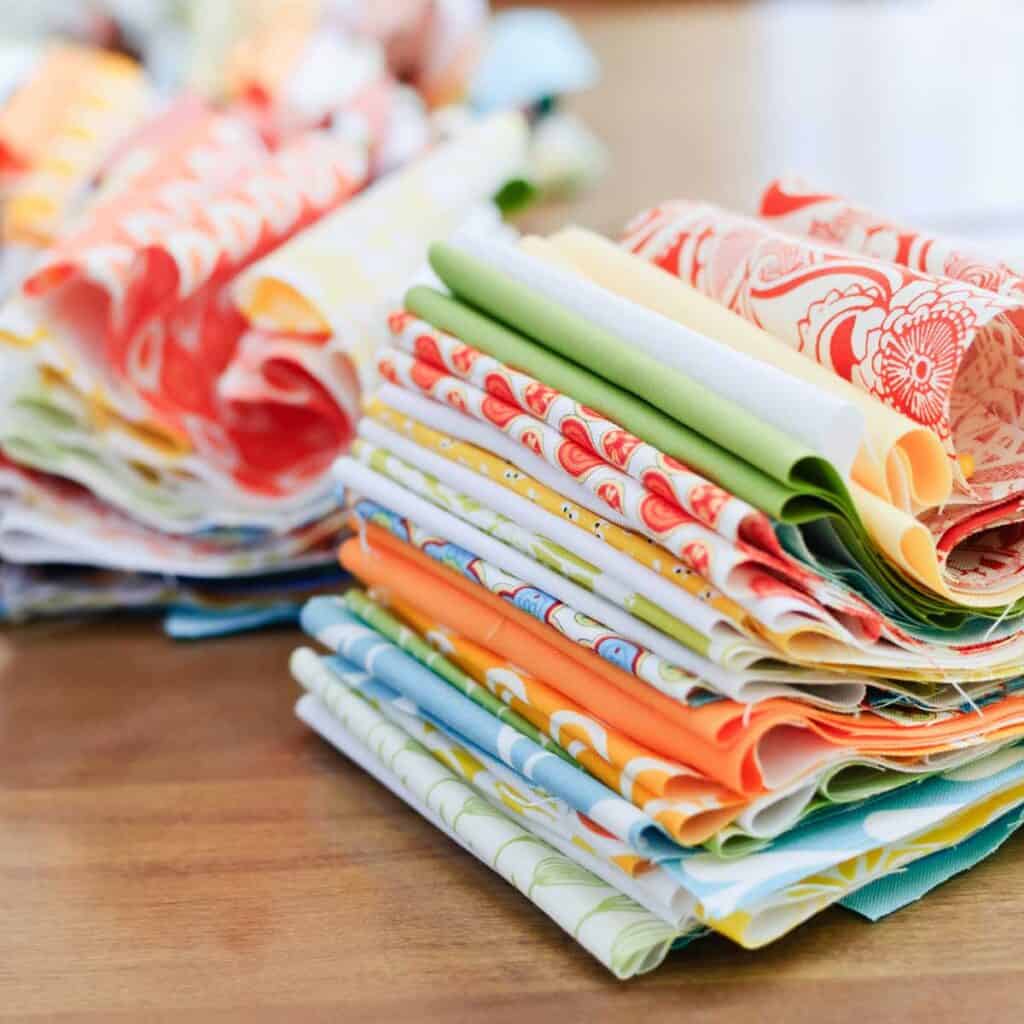
[ad_1]
Inside: Uncover the key to good quilt blocks with starched materials! Be taught the secrets and techniques with the Final Information to Starching Quilt Materials. Say hey to the quilts of your goals with this final information to starching quilt materials. Learn how starching will take your quilting to the following stage!
What if I may assure that your quilt material wouldn’t stretch if you minimize it – even when reducing slim strips. Nor wouldn’t it stretch if you sew throughout the bias. And (my favourite) the machine quilting course of can be a lot simpler.
Properly, this isn’t a material fantasy. There’s a approach to insure that your material stays steady all through the quilt making course of. It’s known as material starch. Yep, good ol’ normal starch will stiffen your materials and make your tasks go collectively a lot better. Better of all, it’s a reasonable software to have in your quilting arsenal.

Need an ad-free, printable copy of this tutorial? Scroll to the underside of this submit for extra particulars!
Learn how to Starch Materials for Quilting
To start with, in the event you’re they sort of one that needs to dive into your quilt the minute you get your fingers on some material, then starching won’t be for you. And, you don’t need to starch your quilting material to your quilt to prove wonderful.
Nonetheless, if you’d like good factors, your piecing to be exact, and the quilting course of to go easily, then you might wish to think about starching your quilting material.
DO starch either side of the material! This fashion, all of your materials could have the identical stage of stiffness and stability, which might make it simpler to attain exact cuts and correct piecing.
DO saturate your materials with starch.
AVOID starching precuts (jelly rolls, allure packs, layer truffles, and many others.) as a result of they may shrink in a single course. Or in the event you do you’ll want to account for a small quantity of shrinkage.
DON’T starch and retailer your materials. When you’ve starched and ironed your materials, you’ll want to use them immediately. Starching your materials after which storing them could cause them to turn into stiff and brittle over time, which might make them tougher to work with. It could additionally appeal to bugs like silverfish.
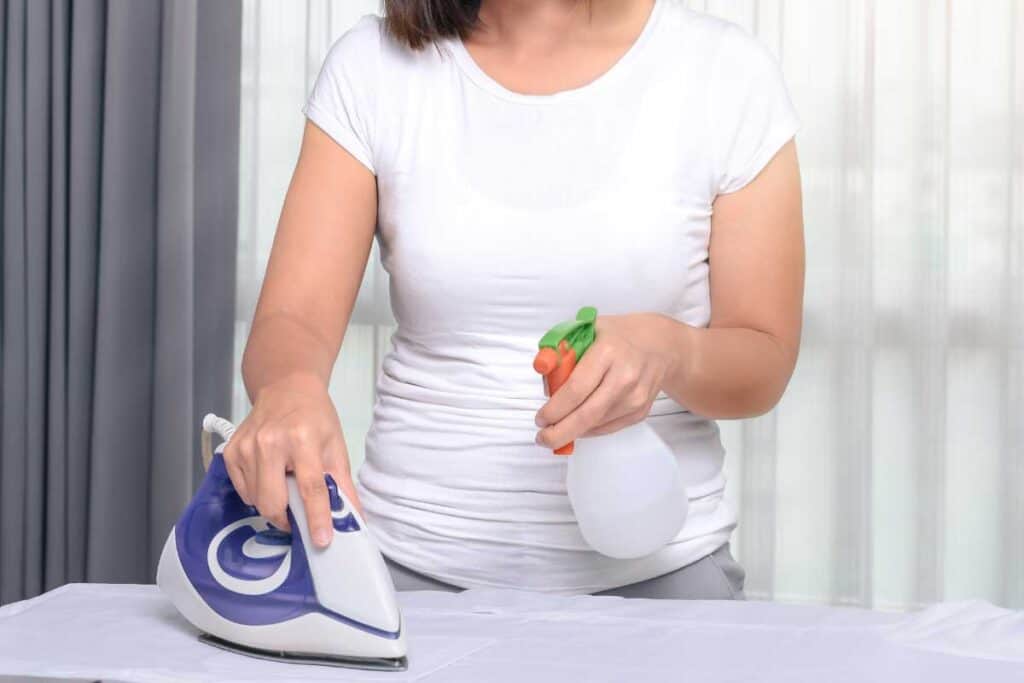
With regards to material starch, there are a number of choices to select from: Liquid Starch, Spray Starch, Craft Spray, and a selfmade spray.
Possibility 1: Use Liquid Starch for Quilt Materials
Provides
LIQUID STARCH is a concentrated answer that’s blended with water earlier than being utilized to your materials. It must be diluted by mixing 50% starch with 50% water. Should you want much less starch, dilute in 10% increments (Ex: 40% starch/60% water).
- To make use of liquid starch, take your 50/50 mix and add to a plastic tub.
- Placed on rubber gloves earlier than including materials to starch answer.
- Add in your materials, beginning with lighter materials first, then actually drench your materials within the starch answer by working it in together with your fingers.
- Wring out any extra and let it dry on a drying rack and permit it to completely dry on a rack for 4-8 hours. Observe: That is the place you’ll use a wringer.
- As soon as dried, iron out the wrinkles.
- To keep away from creases, minimize material immediately or roll up onto cardboard tubes.
Professional Tip: Should you make lots of quilts you would possibly wish to think about getting an quaint garments wringer. It would wring out a lot of the moisture and your materials will dry actually quick.
LIQUID STARCH PROS:
- That is probably the most economical and efficient technique of starching material.
- When completed properly, your reducing and piecing will go collectively fantastically.
LIQUID STARCH CONS:
- Is a bit of time consuming since you ought to enable 4-8 hours of drying time.
- The method may be messy.
- It is a grain-based product, so long-term storage may appeal to bugs equivalent to silverfish.
- Should you’re the kind of quilter who jumps proper in if you get your material, this selection in all probability isn’t a great one for you.
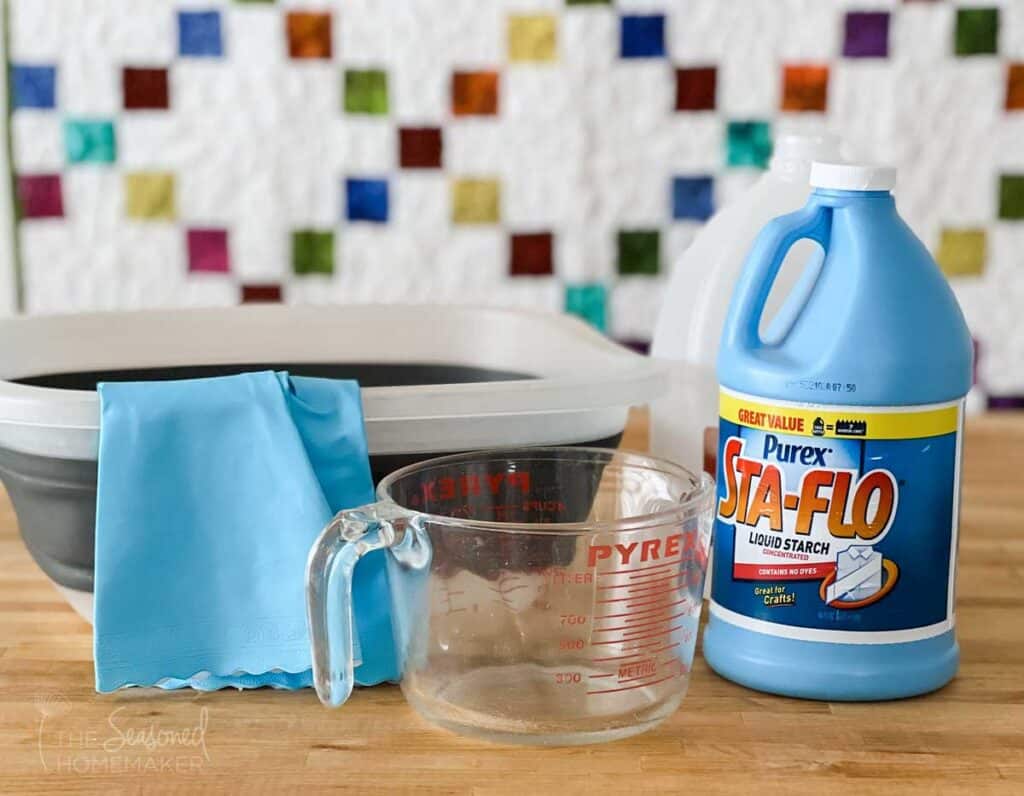
Possibility 2: Family Spray Starch for Quilt Materials
Provides
SPRAY STARCH is available in an aerosol can and is utilized on to your material. It’s a handy, easy-to-use choice, and it’s good for a fast and simple enhance of stiffness in the event you’re brief on time. One can of spray starch can normally starch the material for 1-2 medium quilts.
- As a result of it’s an aerosol, solely spray in a well-ventilated area.
- I like to recommend evenly spraying , in any other case you may get spots in your material (which do wash out).
- Saturate either side of the material with starch and permit it to completely dry on a rack for 4-8 hours.
- Place a sheet or towels on the ground if you’re spraying as a result of the starch can embed into carpet or make flooring slippery.
Professional Tip: I wish to put my drying rack in a tub in case of any drips. You possibly can additionally place a towel or sheet beneath, too.
HOUSEHOLD STARCH PROS:
- Pretty economical and extensively obtainable
- Seams press flatter
- Seams keep within the course pressed
- Makes machine quilting simpler
HOUSEHOLD STARCH CONS:
- Is a bit of time consuming since you ought to enable 4-8 hours of drying time.
- I like to recommend utilizing canned spray starch outdoors as a result of the overspray starches every little thing…like flooring, blinds, stitching machines, and all surfaces. If spraying indoors, put a sheet or towel on the ground to guard carpets and flooring.
- It could flake when urgent – which is messy and drifts all the way down to flooring and lands on blinds. Should you let the spray starch settle into the material and fully dry, that is much less more likely to occur.
- It could make a large number of your iron’s sole plate which would require cleansing the iron.
- Your finger can get drained from holding down the spray button when starching a big piece of cloth equivalent to backing.
- The can’s exterior can get rust close to the nozzle and, if unnoticed, can drip rust in your material which is nearly unattainable to take away. #ithappenedtome
- It has some less-than-desirable elements equivalent to butane, propane, and hydroxyethyl starch. This might impact babies, pets, or anybody with compromised respiratory points (ex: bronchial asthma).
- The elements are corn and/or potato based mostly which might trigger bugs such silverfish if left in saved material.
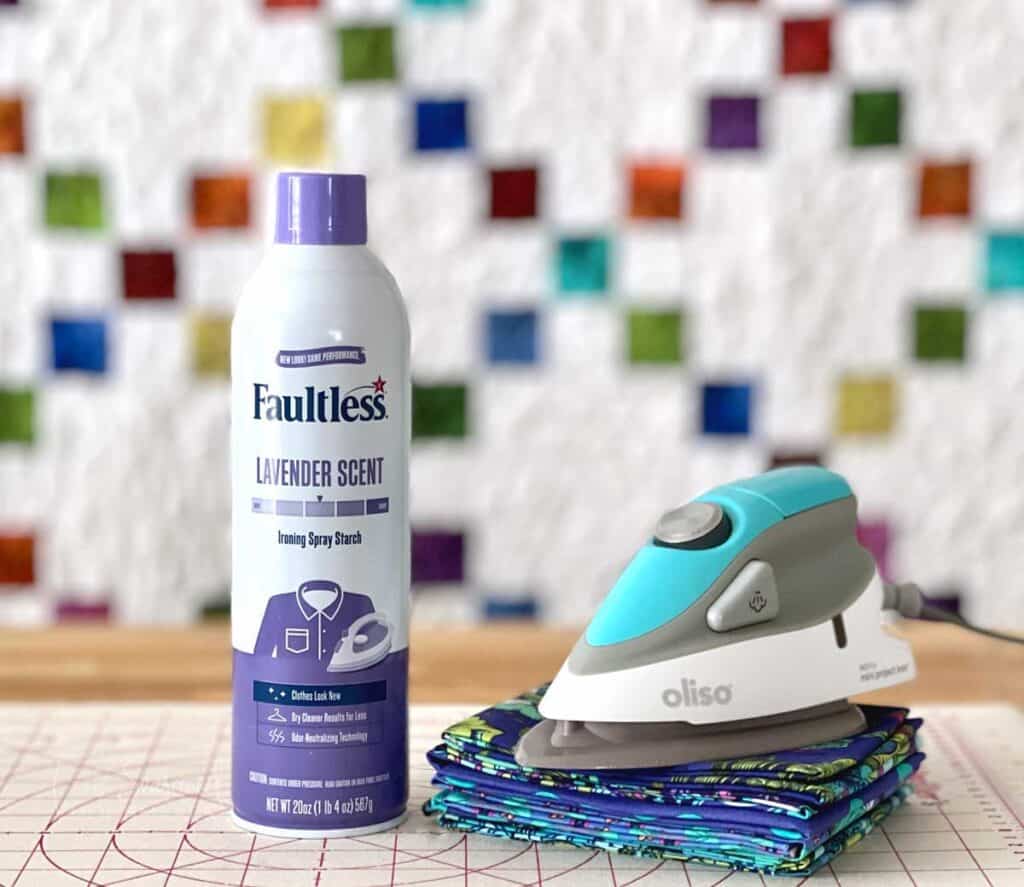
Possibility 3: Craft Sprays for Starching Quilt Materials
Provides
CRAFTS SPRAYS equivalent to Mary Ellen’s Greatest Press or Magic Quilting & Craft Spray are wonderful choices and the costliest alternative. Each of those manufacturers can be found in gallon measurement refills which makes them extra economical.
Professional Tip: Should you resolve to make use of certainly one of these merchandise, I like to recommend buying a steady spray mist bottle. It produces a stunning steady mist that sprays evenly over massive areas and also you gained’t get set off finger fatigue. Simply maintain and spray!
CRAFT SPRAY PROS:
- My go-to product once I wish to stiffen precuts like fats quarters and 10″ squares.
- Each merchandise are wonderful at layering on the product.
- Utilizing the mist bottle isn’t as messy as spray starch, it dries rapidly, and you may add one other layer.
- Not a grain-based product.
- Non-aerosol product that gained’t gum up the nozzle (or the atmosphere)
- Magic Quilting & Craft Spray prices lower than Mary Ellen’s Greatest Press and I can’t discover any discernible variations in these two merchandise.
- Magic Spray is unscented (my desire)
- Not more likely to appeal to bugs when saved.
CRAFT SPRAY CONS:
- Costliest choice, however price it, for my part.
- Utilizing the usual spray bottle could cause trigger-finger fatigue when protecting a big piece of cloth.
- It’s extra like material sizing.
- Have to be layered on to get stiffer material.
- Materials don’t stiffen as successfully as starch.
- Most Greatest Press merchandise are scented, however can be found unscented.
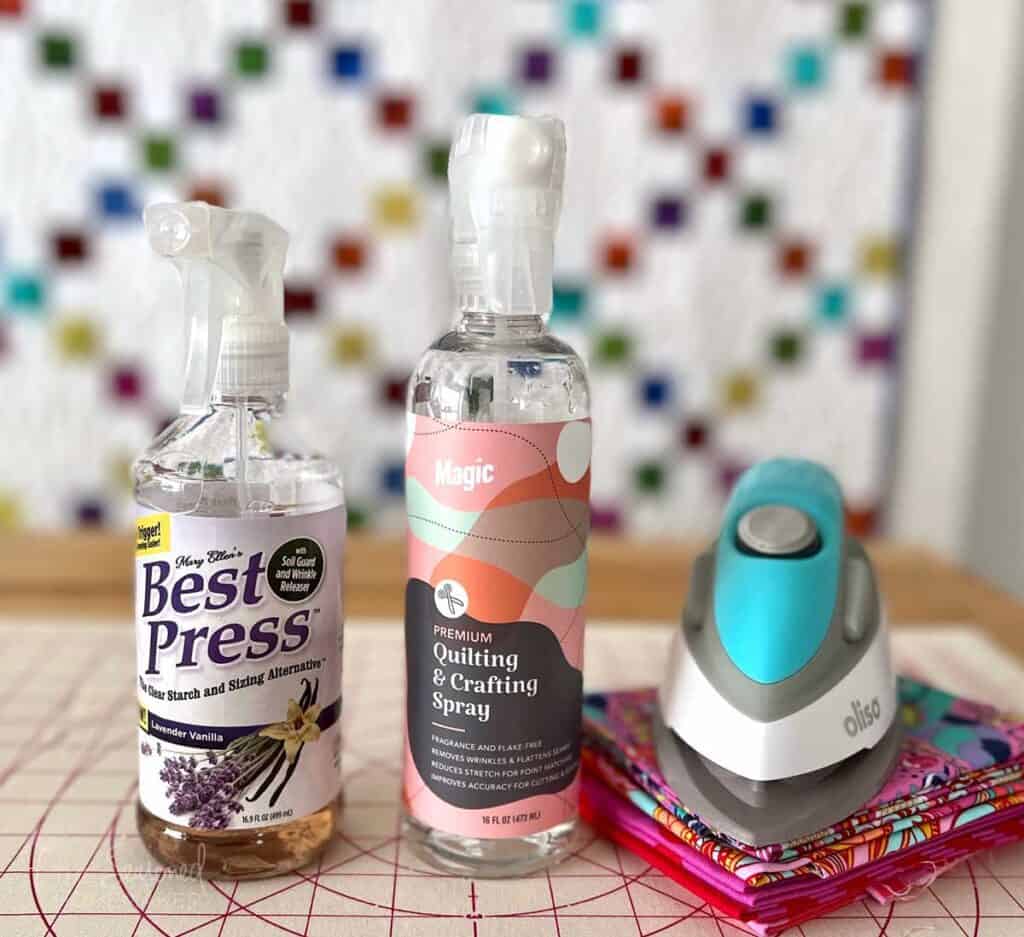
Possibility 4: Non-traditional Spray Starch
Provides:
Choices 1-3 above have some measure of chemical compounds with un-pronounceable names that may be dangerous to people, pets, and the atmosphere. Fortunately, there may be approach to make your personal spray starch utilizing vodka and distilled water. The outcomes are much like utilizing a Craft Spray. See beneath for instructions.
RECIPE:
- Measure the ounces in your explicit spray bottle and divide into thirds.
- To the spray bottle add the next ratio of vodka to water:
- 1 Half Vodka (ex: 1/3 C. Vodka)
- 2 Elements Distilled Water (ex: 2/3 C. water)
- Shake properly earlier than every use.
NON-TRADITIONAL SPRAY PROS:
- Cheap approach to make a copycat of the costly craft sprays.
- Straightforward to make.
- Easy elements.
- Could trigger a spontaneous celebration to interrupt out within the stitching room if consumed by sewist.
NON-TRADITIONAL SPRAY CONS:
- Materials don’t stiffen as effectively as starch.
- Faucet water isn’t really useful as a result of the minerals and the vodka would possibly mess up your iron’s sole plate.
- As a result of it’s produced from corn or potatoes, it may appeal to bugs when saved.
- Family and friends might choose you if you’re seen strolling out of a liquor retailer carrying two gallons of vodka!
- It may be tempting to drink your spray if you notice you must rip out a complete part of a quilt.
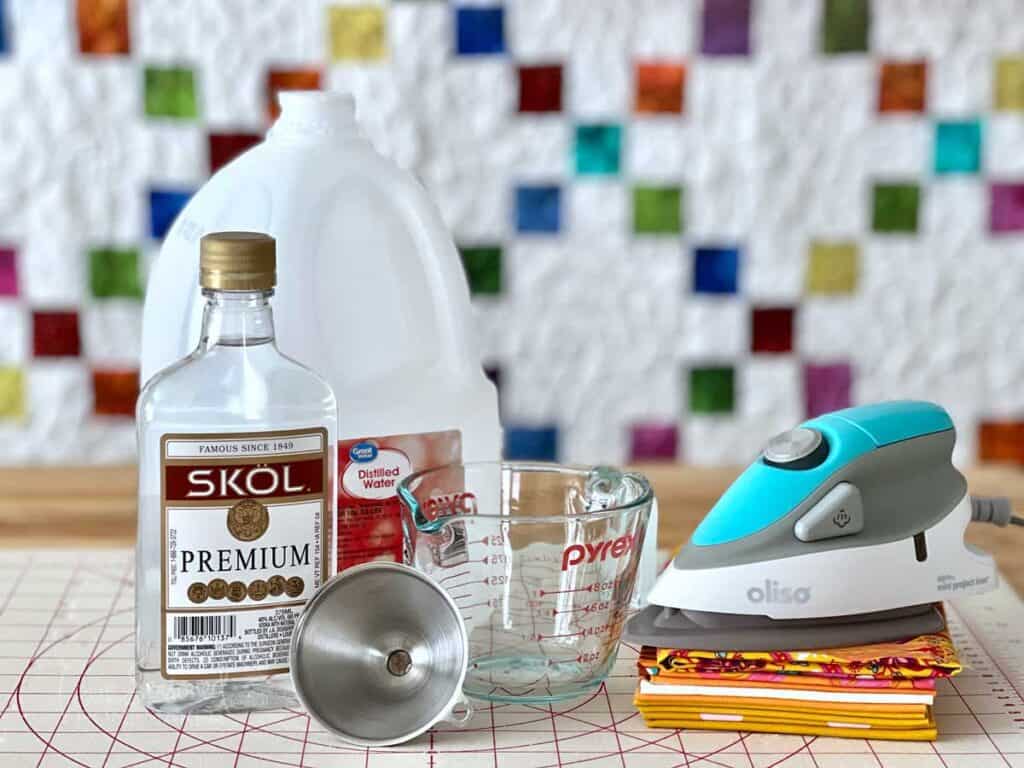
To Starch or To not Starch
First, you DO NOT need to starch material earlier than beginning a quilt. Most materials include some type of material end or sizing which provides them a bit of physique. Should you’re frightened about folds in precuts, spritzing with water will normally take away them.
Nonetheless, if you’d like pristine quilts with each level sharp, all your seams to match fantastically, little material fraying from dealing with, or stabilized bias cuts then you’ll want to starch your materials utilizing one of many strategies above.
My Personal Starching Preferences: I’m someplace within the lazy center. I exploit a misting bottle and an unscented craft spray. When starching the entire materials for a quilt, I place a folded piece of cloth over my ironing board which provides me two layers to soak up any over-spray and protects my ironing board cowl. I put an outdated bathe curtain liner beneath the ironing board then I mist on a few layers of craft spray and drape my items over a drying rack. This works properly for issues like fats quarters and smaller cuts of cloth. For bigger items like backing, I spray one layer of craft spray and drape the material over the drying rack. Relying on the scale of the backing material I’ll need to fold it. I let this dry for at the very least 8 hours, switching across the folds, if wanted.
On the finish of the day, whether or not or to not use material starch is a private desire and relies on the standard of cloth you’re working with and the top outcomes you’re attempting to attain.
Experiment with a number of of those choices and see which one works greatest for you and your quilting tasks. And, don’t be afraid to attempt completely different methods and types to seek out your best starching technique to your quilting tasks.
>>> Need an ad-free, printable model of this submit? Click on the pink button beneath and obtain the Printable PDF tutorial.
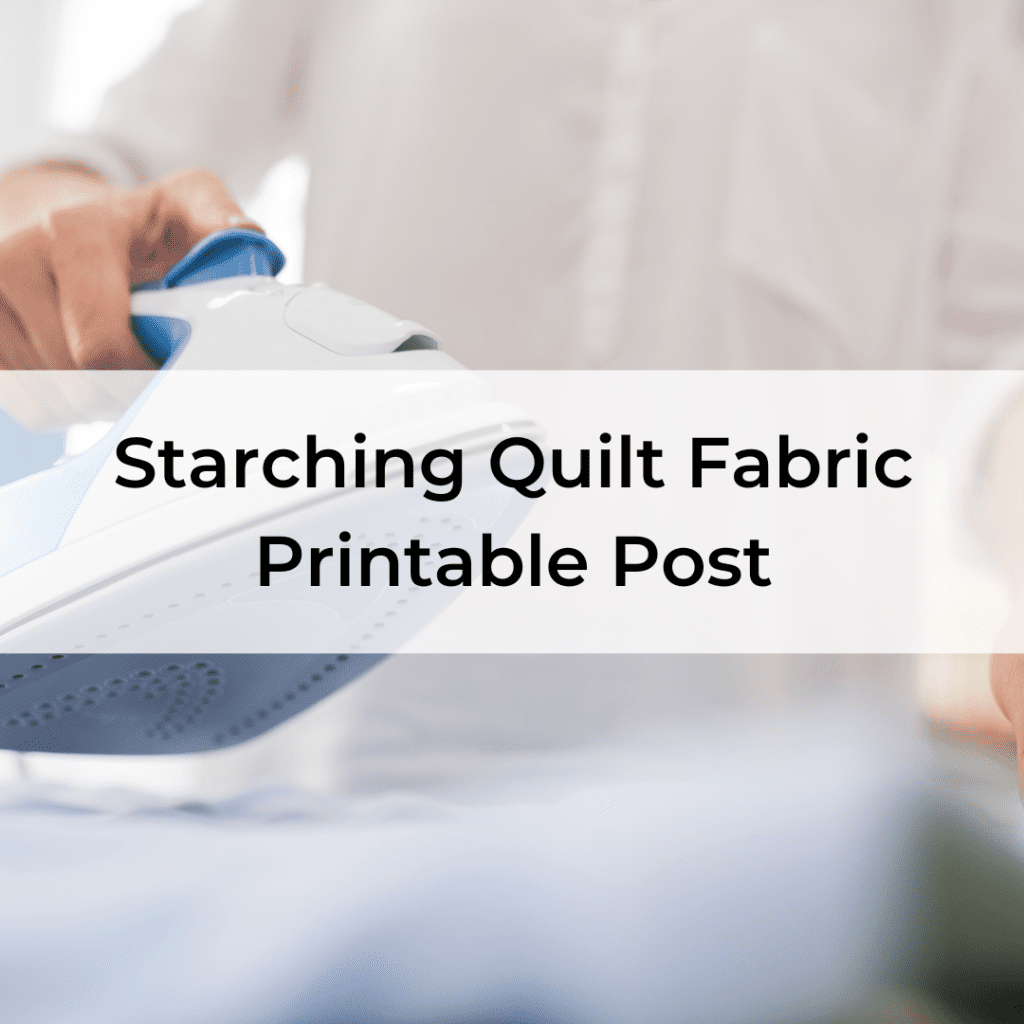
[ad_2]

